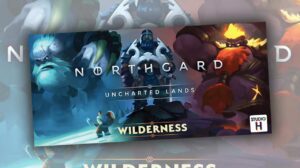Project GIPF is a series of eight abstract strategy games designed by Kris Burm. Each game features a hexagonal playing area and involves a dwindling of either pieces or playing area mechanic. The way they approach these elements is not only unique, but combines what I feel are the best qualities in most abstracts: simple rules that reveal complex game play.
If you’ve never heard the games within Project GIPF, GIPF, TAMSK, ZÈRTZ, DVONN, YINSH, PÜNCT, TZAAR, and LYNGK, I encourage you to seek them out, either in cardboard and bakelite or digitally online. They are well worth your time.
Today’s game: DVONN
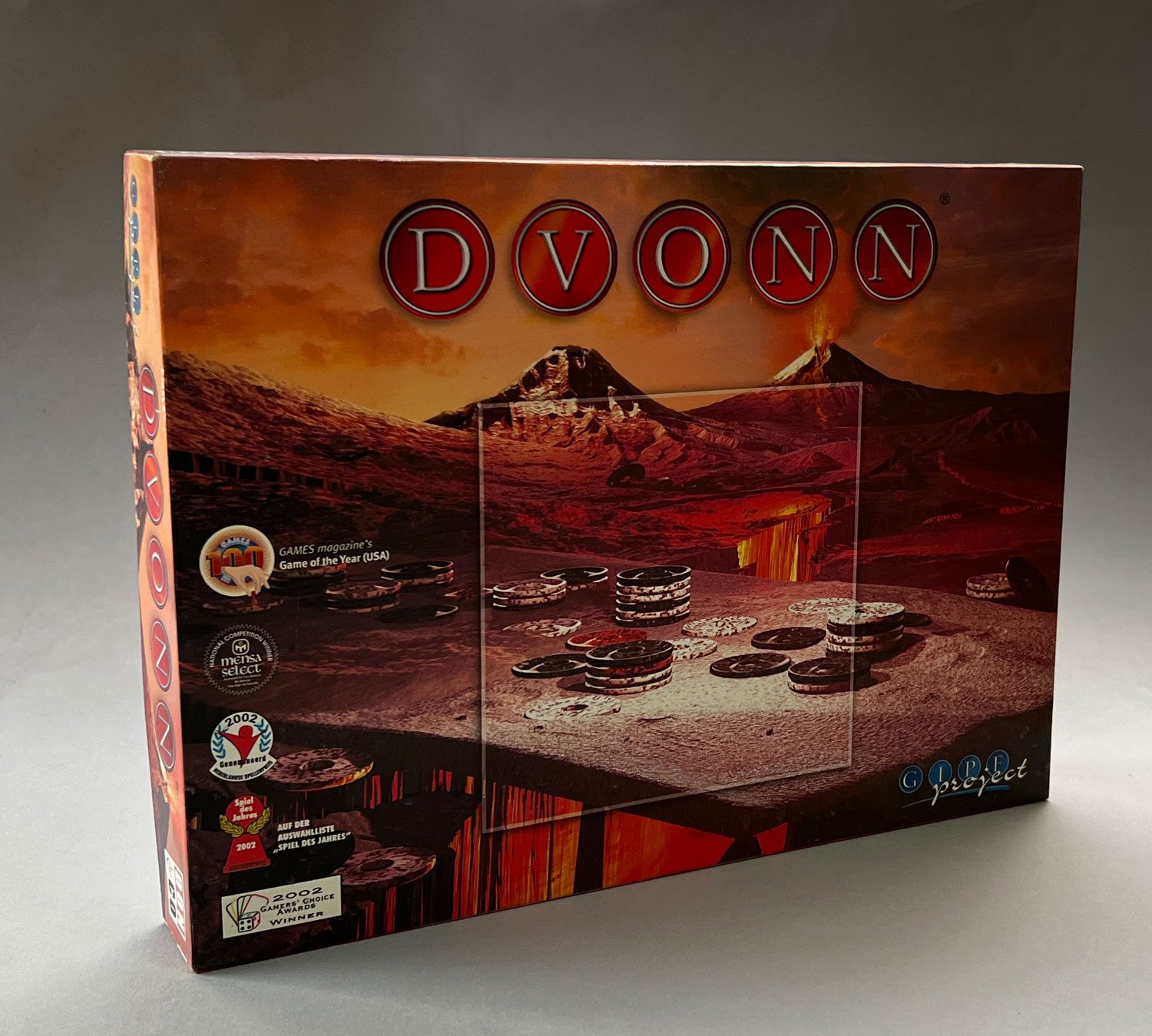
DVONN is a game about stacking. Throughout the game, each turn you take moves a piece or a group of pieces atop another piece or a stack of pieces.
Unlike the other games in the series, DVONN has a board three times as long as it is wide. There are 49 spaces, one for each piece. If viewed as hexes, the board is only five hexes wide and nine hexes long on the edges and eleven in the center.
Playing the Game
Players start by choosing to play as either black or gray. They then collect all 23 pieces of their color, with the gray player taking two of the red DVONN pieces and the black player taking the remaining DVONN piece.
In the initial Placement Phase, players alternate placing the three red DVONN pieces anywhere on the board. After this, players alternate placing their pieces on any open spaces on the board. They will continue in this way until the board is filled.
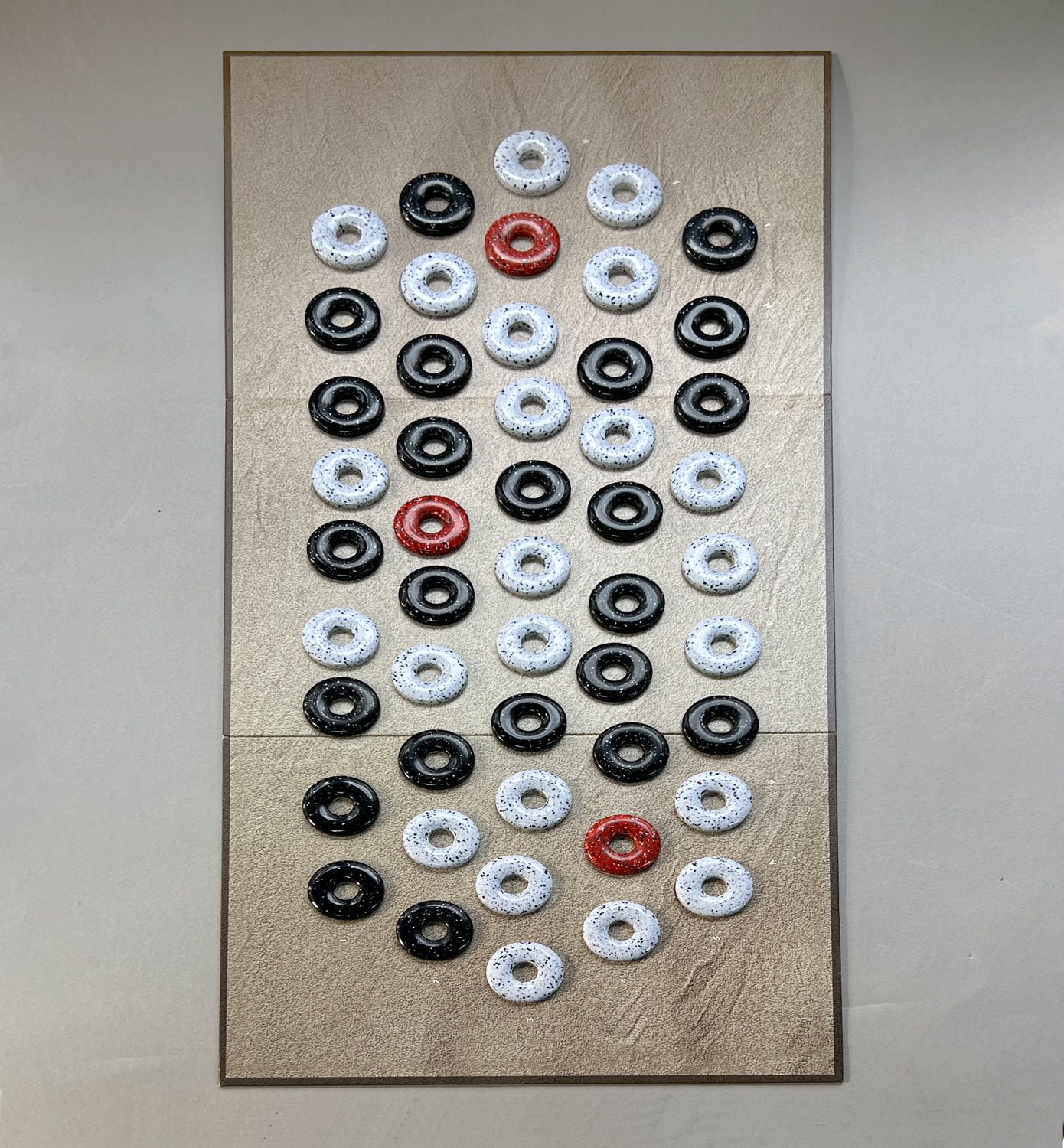
The game then moves into the Stacking Phase: on a turn, players must move any of their pieces that are not surrounded on all six sides on top of any other piece within reach. This means games of DVONN will always start along the edges.
A single piece may only move atop any piece or stack of pieces one space away. A stack of two pieces may move atop any piece or stack two spaces away in a straight line. A stack of three may only move atop a piece or stack three spaces away in a straight line, etc.
A piece or stack of pieces can never move onto an empty space on the board.
The player whose piece sits at the top of the stack controls the stack. A stack surrounded by several single pieces may, therefore, change hands quickly, from turn to turn.
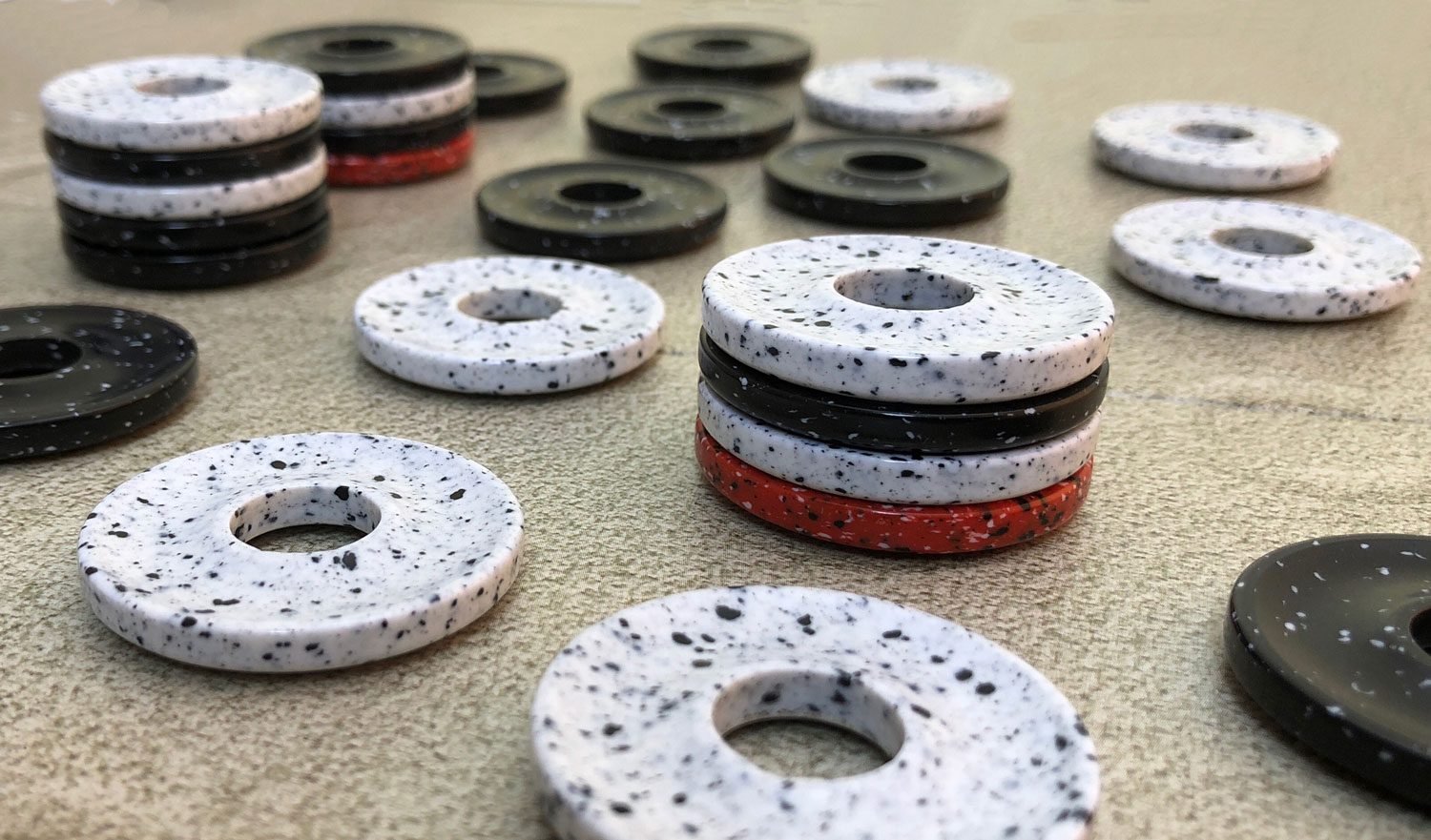
As with all the Project GIPF games, DVONN is a complex, interesting game that is made even better by the addition of a simple rule. In the case of DVONN, this involves the three red DVONN pieces that are the first to go onto the board. For any piece on the board to be considered ‘live’ it must remain in contact with one of the three DVONN pieces—that is, pieces must be linked directly through any uninterrupted chain of other pieces to at least one of the red DVONN pieces. Any piece, or more likely, any group of pieces not linked to a DVONN piece are removed from the board and returned to the box.
The end of game scoring is one of the simplest I’ve seen. When neither player can move, each player takes all of their ‘live’ stacks from the board and places them one atop the other to create a single stack of pieces. The player with the tallest stack is the winner.
DVONN Thoughts
DVONN is another simple to teach and easy to learn game that quickly shows its depth and complexity after the first few moves. As the board begins to condense and empty spaces begin separating the board into sections, opportunities for moving pieces become limited. The pressure of needing to keep pieces in contact with one of the DVONN pieces begins to build.
You may have more stacks than your opponent, but if your opponent can successfully cut those stacks off from the DVONN pieces, those stacks will all be for naught.
DVONN pieces themselves are neutral. It doesn’t matter who placed them on the board; they are in play for everyone. Although you cannot pick up a DVONN piece and use it to capture an opponent’s piece or stack, you can move one of your pieces or stacks atop a DVONN piece. This means you can control where it lives on the board. Also, any stack that contains a DVONN piece will always be considered ‘live’ as it possesses a DVONN piece within itself. If you control such a stack, you should work to find ways to move it away from your opponent’s pieces and towards your own.
One of the keys to winning DVONN is in keeping your pieces mobile. Large stacks quickly become difficult to move and, therefore, easy to cut off. Carefully consider the board before giving into the urge to own any tall stacks without a DVONN piece. Since they can only move a distance equal to the number of pieces in the stack, they can easily become stuck. And once stuck, they can be cut off from a DVONN piece far more easily.
In the Placement Phase you’ll want to keep your own pieces along the borders of the board so they can be mobilized early on. Keeping the DVONN pieces spread across the board will help both players, but you’ll still want to position your own pieces around them as advantageously as possible.
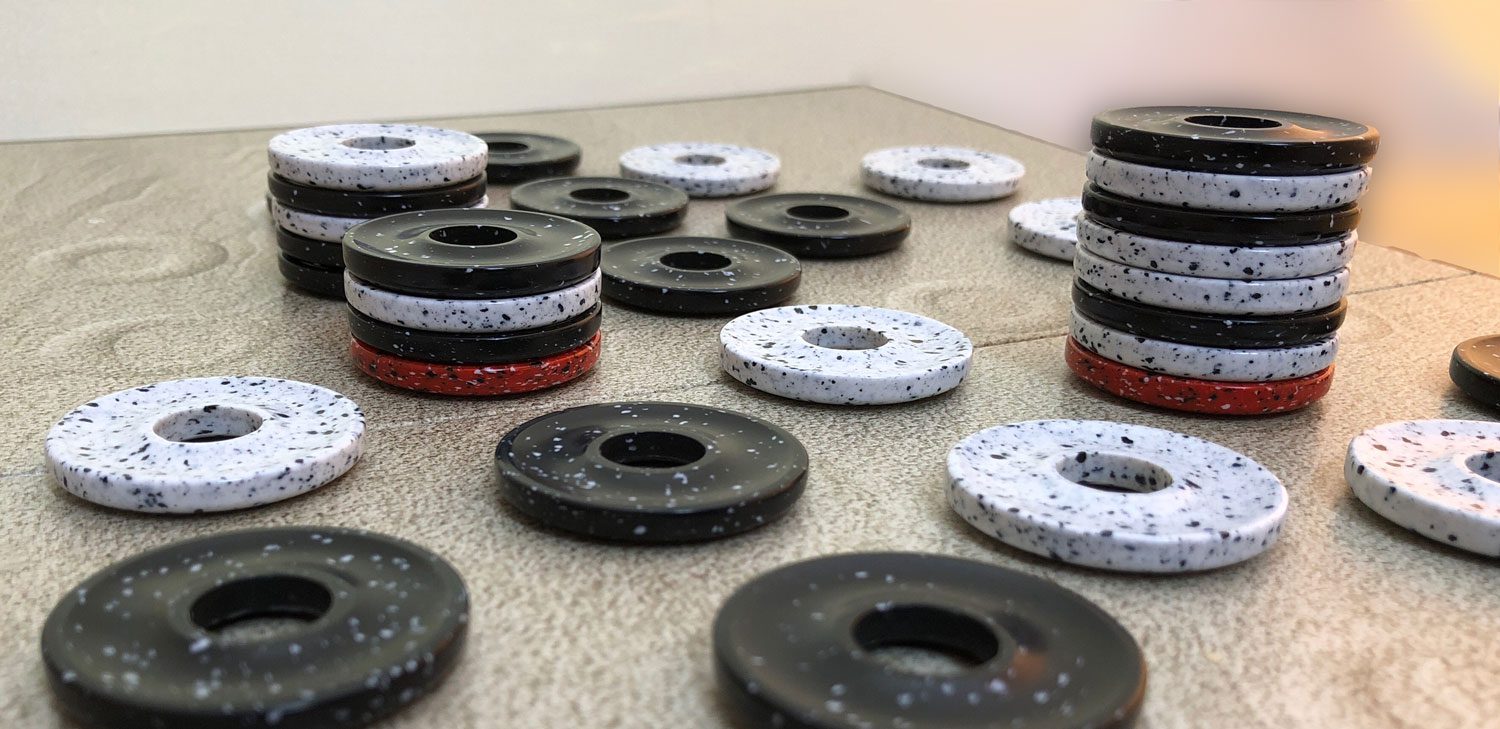
The number of legal places to move on the board quickly diminishes. Keep this in mind as you look for opportunities to limit your opponent’s movements and maximize your own.
The game ends when neither player has a legal move. However, if one player cannot move, they must pass. The other player continues making moves until they run out of legal moves. This can often be the deciding factor in who wins a game of DVONN.
DVONN is typically a relatively short game. The 49 spaces on the board dwindle quickly, limiting movement opportunities and threatening to eliminate groups of pieces from the board. It’s a game that may take a few moves to understand the ramifications of the simple rules. Once understood, though, there’s a balance you must consider in each move: How do I claim stacks and keep them alive and mobile while keeping my opponent from doing the same?
I love watching that “ah ha!” moment spread across a new player’s face when DVONN’s depth of play becomes apparent to them. It’s another wonderful example of how simple rules can lead to complex gameplay.
If you like abstracts, you need to check out DVONN.
Here's a list of all Project GIPF reviews.


